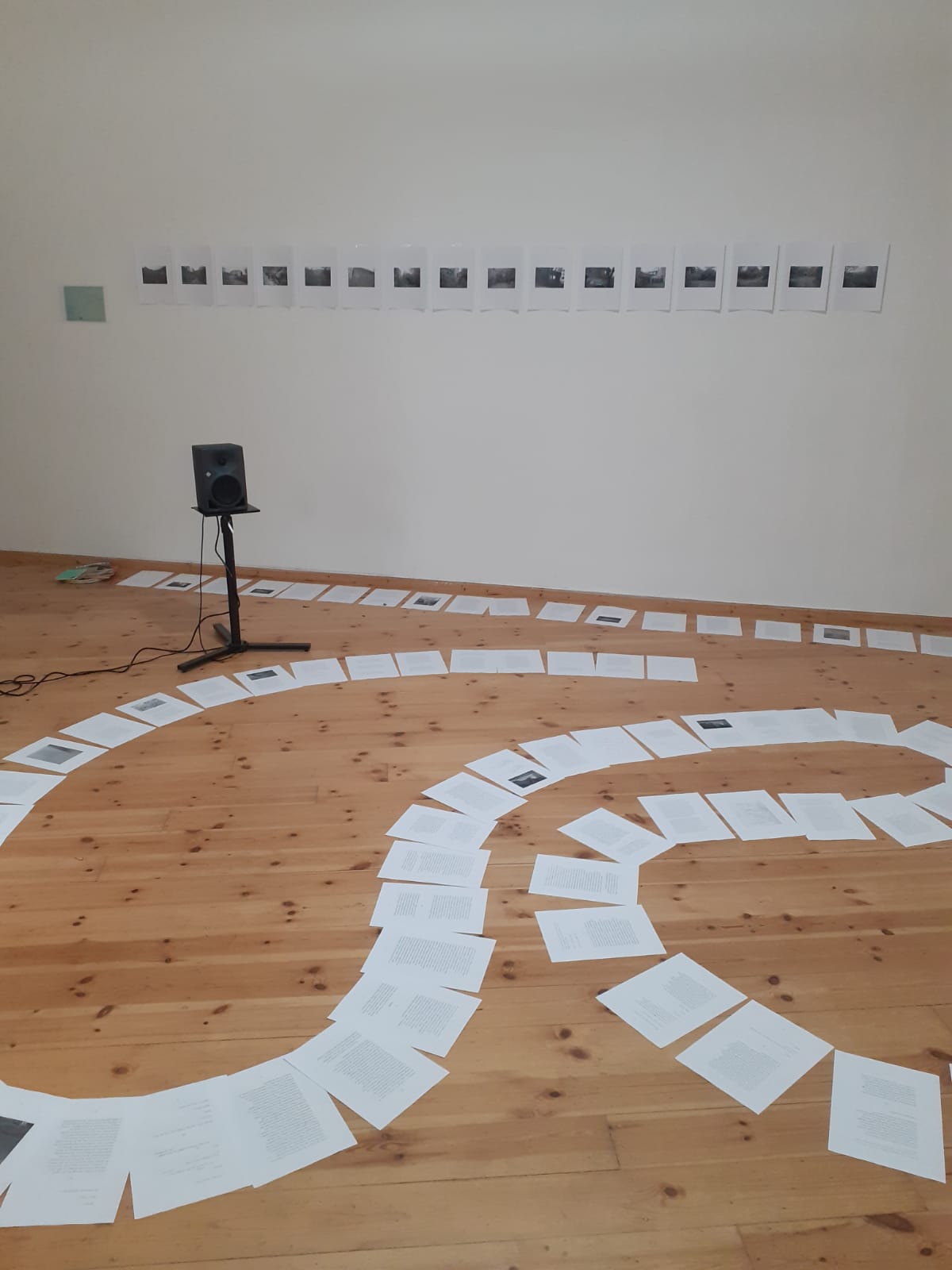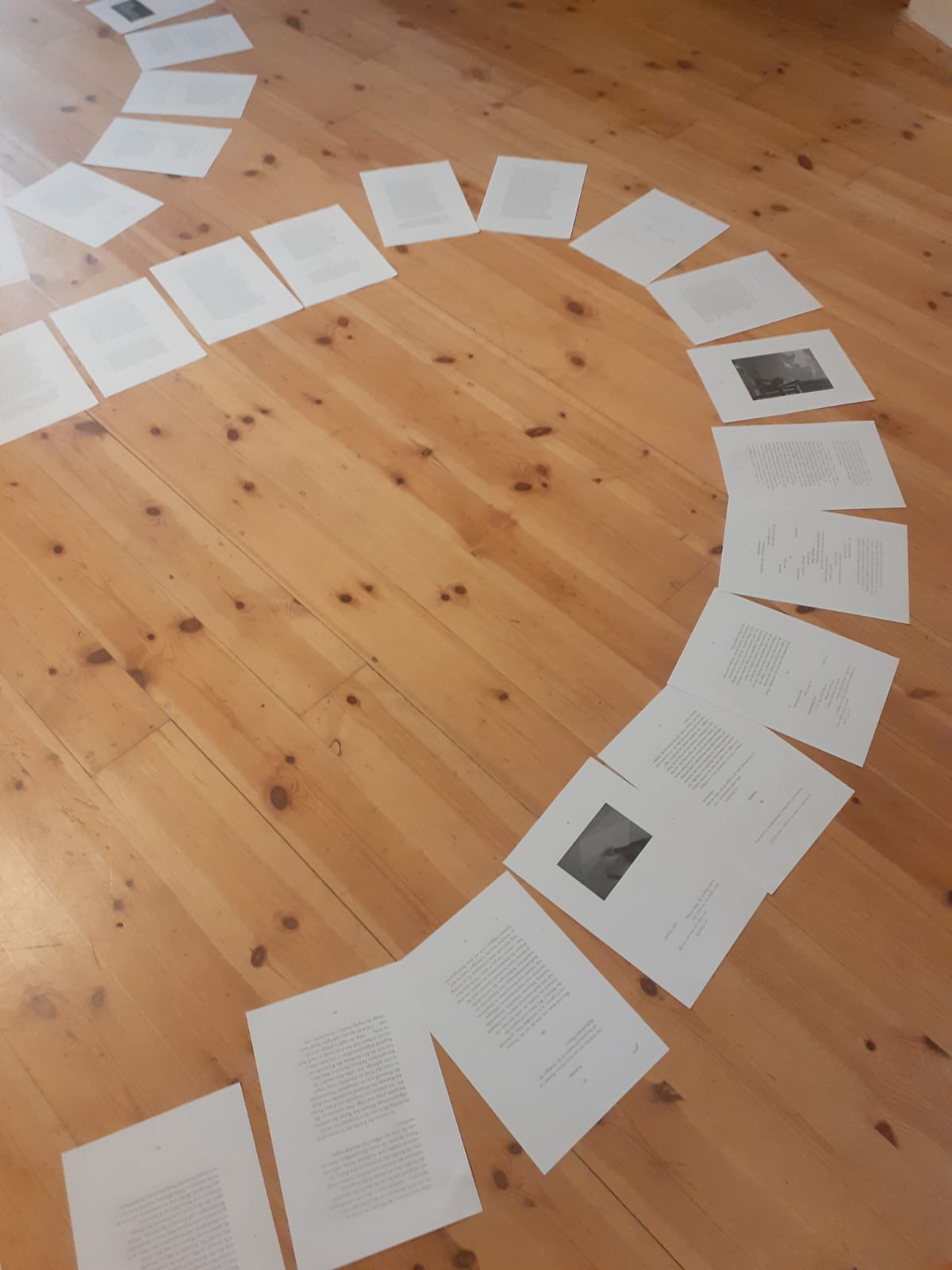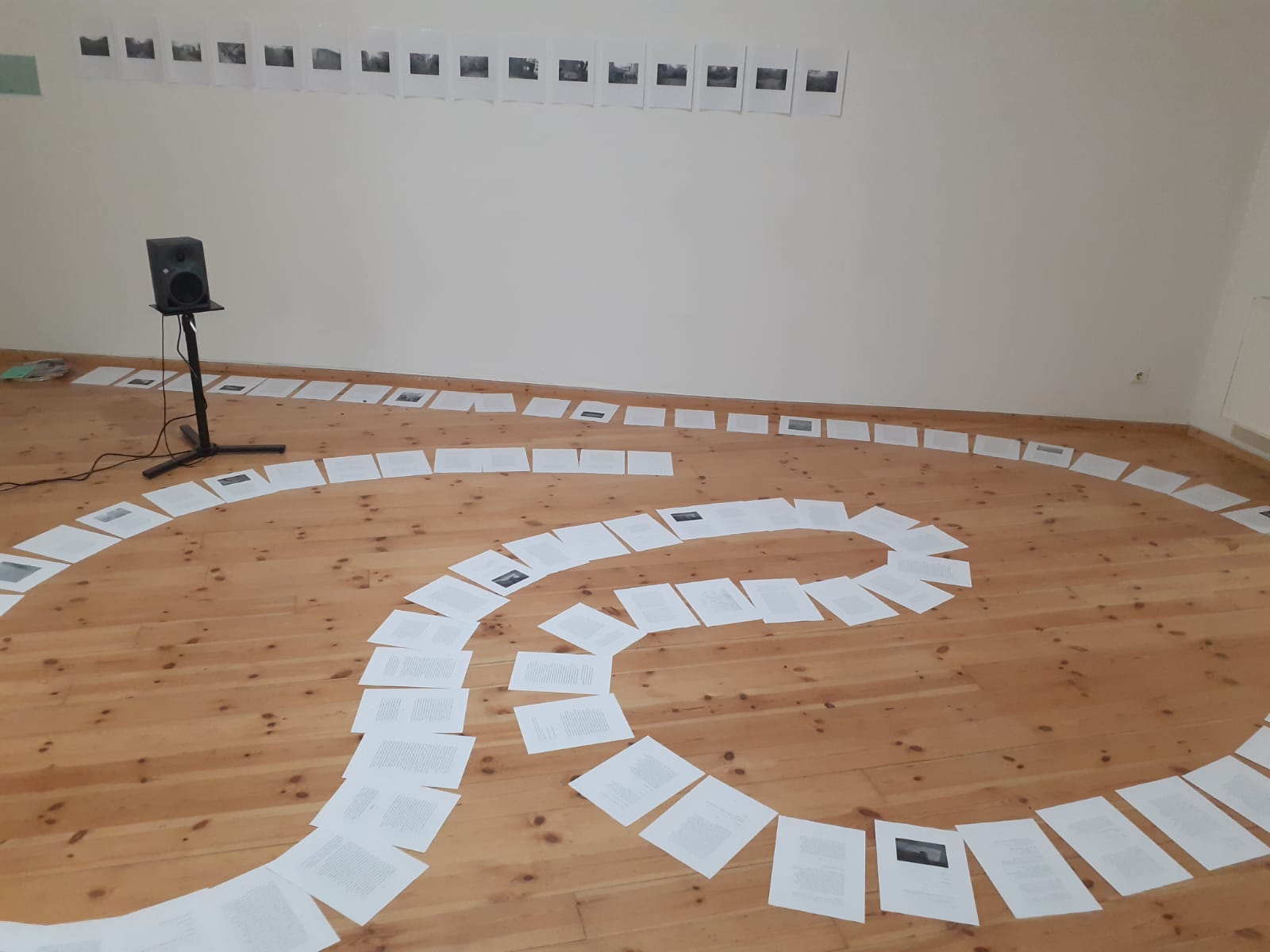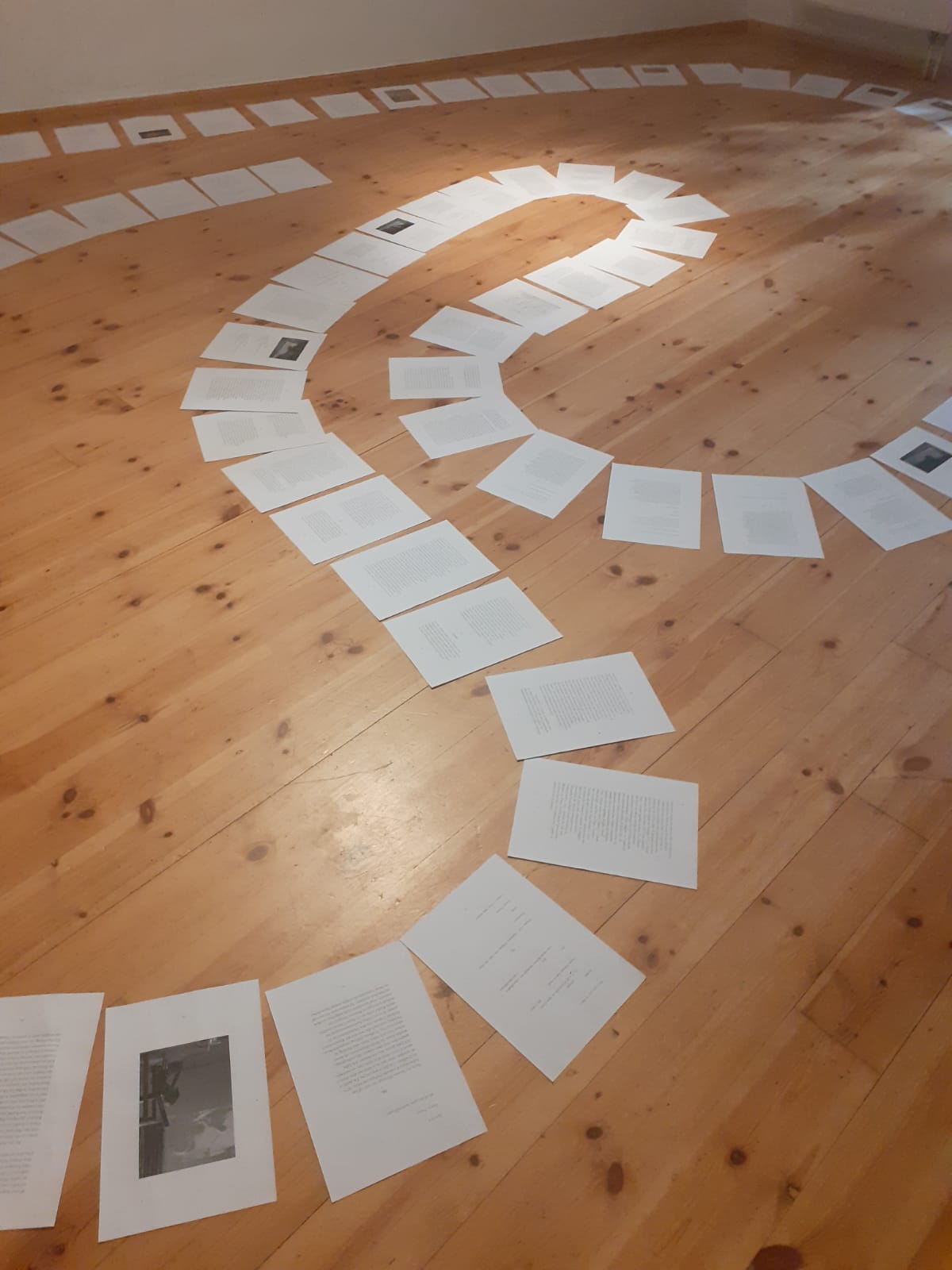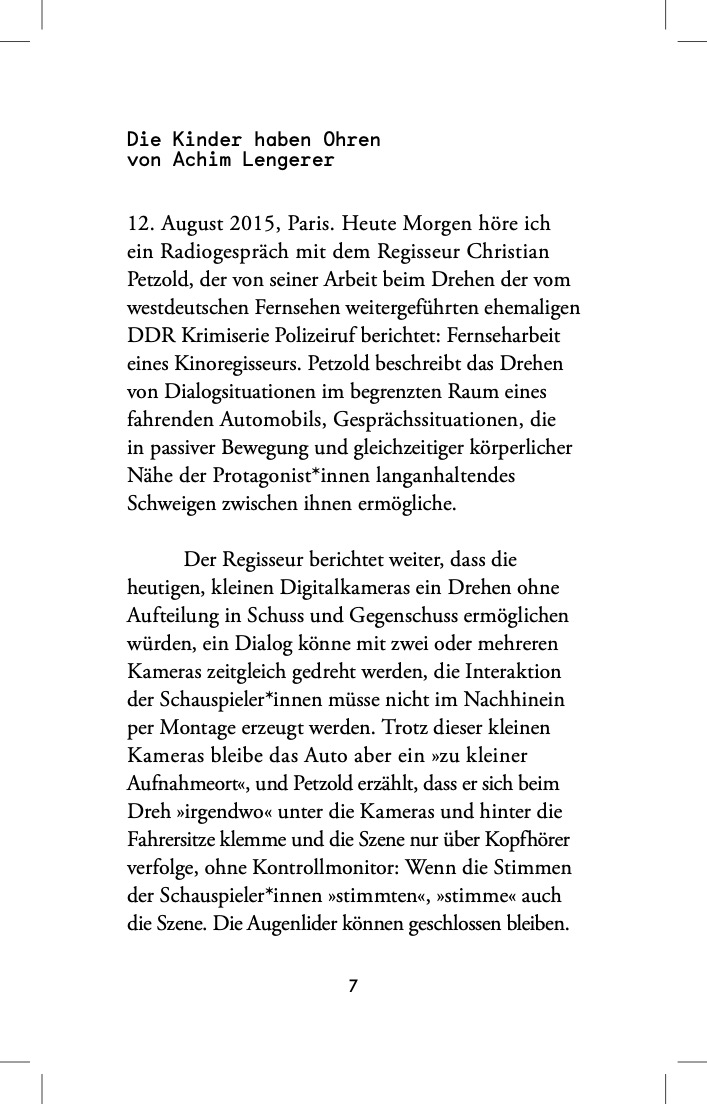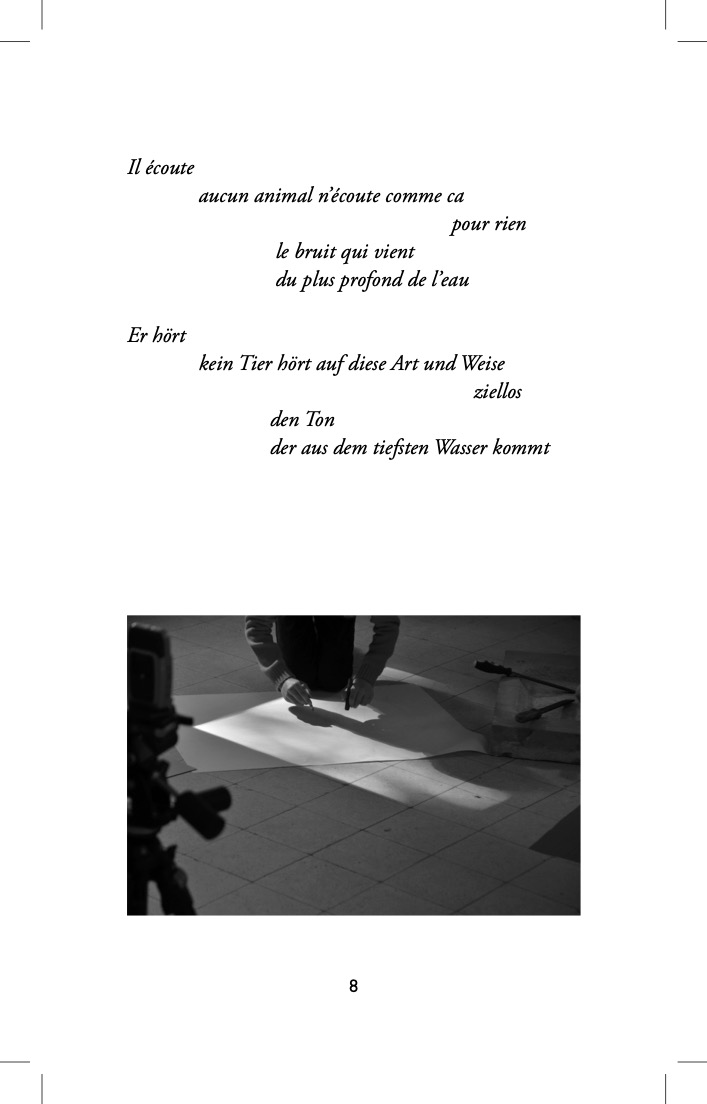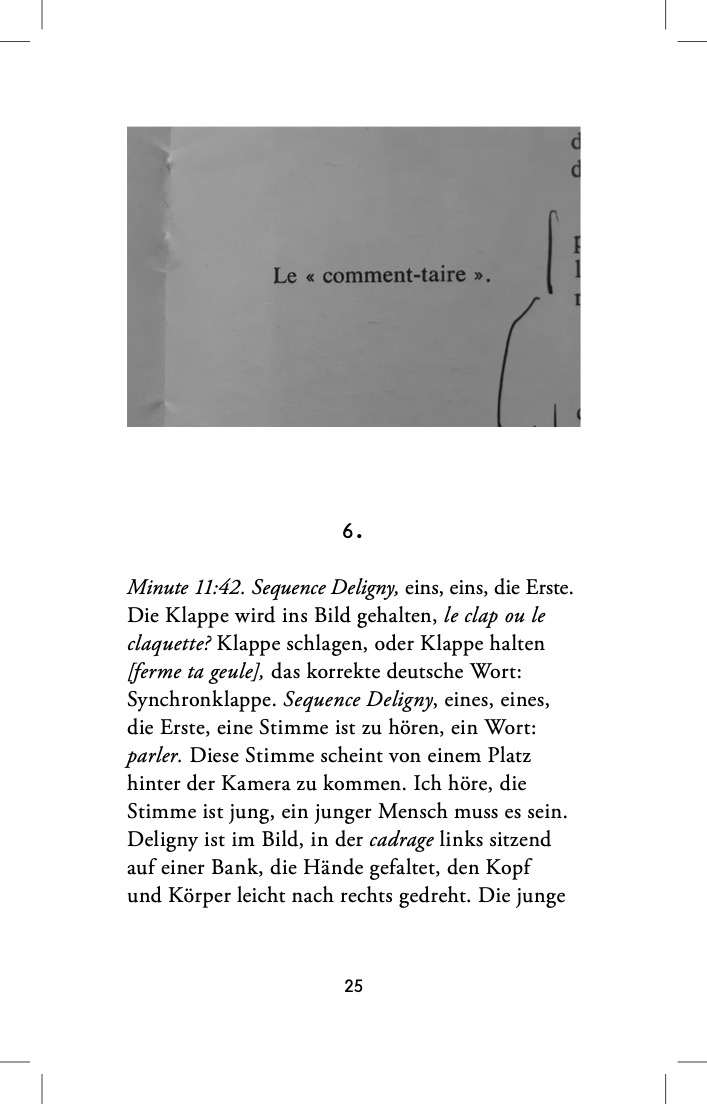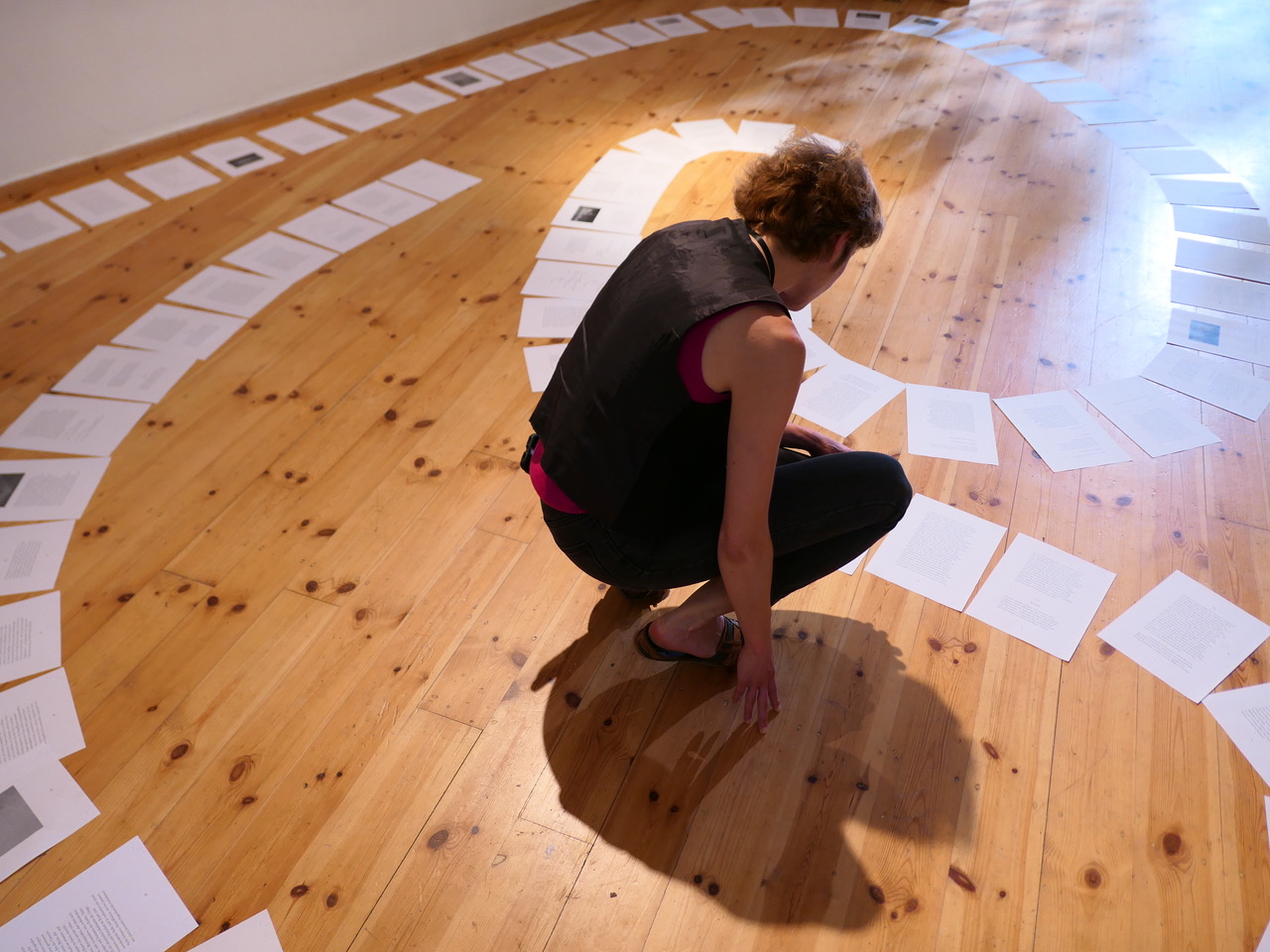Partners / Achim Lengerer / Voix-off
Partners: Achim Lengerer
As part of the residency organized at Errant Sound in May-June 2021, artist and editor Achim Lengerer (Scriptings) used his time to re-edit sound files and texts of his recently finished publication “Voix-off … aber wir sind der Sprache scheißegal”. In here, he reflects on the “tentative” (experiment) by the French social worker, writer and filmmaker Fernand Deligny (1913–96) in the South of France and Deligny’s “voix-off” of the film “Ce gamin, là” (1975; dir. Renaud Victor).
Fernand Deligny began working with children as a social worker in the 1940s. From the very beginning, his work was complemented by his writing: “Le moindre geste a une histoire” / “The smallest gesture has a story,” as he wrote in the first sentence of his November 1966 article “Journal d’un éducateur” / “Diary of an Educator.” In the course of the 1960s, Deligny increasingly withdrew from institutional contexts. Together with a group of young adults, he founded a community in the south of France in order to live with children labelled by psychiatrists as “autistic.” In his work as a pedagogue, he aimed not to educate or heal the children entrusted to his care, but rather to enable them to create an environment and an arena for their own unique ways of utilizing space and time. Over the decades, a number of documentary films with accompanying texts were produced (such as Le Moindre Geste, 1962–71, and Ce gamin, là, 1975) as well as writings on the cinematographic image (“Camérer,” 1983, and “Ce qui ne se voit pas,” 1990). His ideas about film emerge in the way the soundtrack is employed in “Ce gamin, là”. Deligny uses the film’s voice-over as a literary narrative voice cautiously placed in a parallel relationship with the filmic image: a soundtrack which is laid “alongside” the picture track, and which expresses itself in a fragile balance with the children’s NOT SPEAKING. The children’s voices on the one hand and Deligny’s language on the other complement each other in Lengerer’s wary attempt to re-think the sonorous and resonant quality of this media and social space created by these intertwining voices.
